For the 2025 school year, there is 1 public preschool serving 411 students in River View Local School District. This district's average pre testing ranking is 8/10, which is in the top 30% of public pre schools in Ohio.
Public Preschool in River View Local School District have an average math proficiency score of 75% (versus the Ohio public pre school average of 48%), and reading proficiency score of 73% (versus the 53% statewide average).
Minority enrollment is 5% of the student body (majority Hispanic), which is less than the Ohio public preschool average of 39% (majority Black).
Overview
This School District
This State (OH)
# Schools
3 Schools
839 Schools
# Students
1,601 Students
334,112 Students
# Teachers
86 Teachers
18,897 Teachers
Student : Teacher Ratio
19:1
19:1
District Rank
River View Local School District, which is ranked within the top 50% of all 918 school districts in Ohio (based off of combined math and reading proficiency testing data) for the 2021-2022 school year.
The school district's graduation rate of 90-94% has stayed relatively flat over five school years.
Overall District Rank
#325 out of 929 school districts
(Top 50%)
(Top 50%)
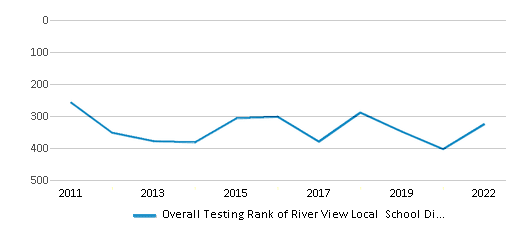
Math Test Scores (% Proficient)
57%
52%

Reading/Language Arts Test Scores (% Proficient)
65%
60%
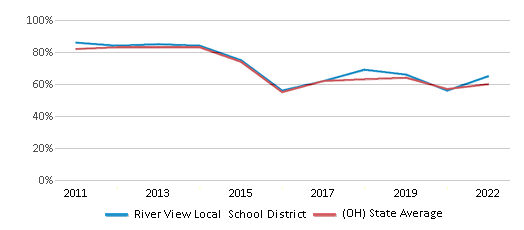
Science Test Scores (% Proficient)
67%
63%
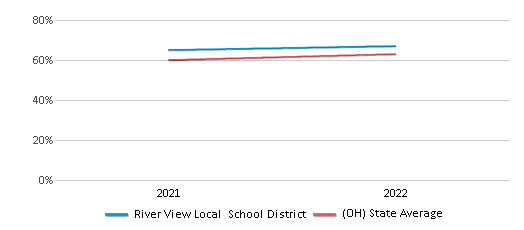
Graduation Rate
90-94%
86%
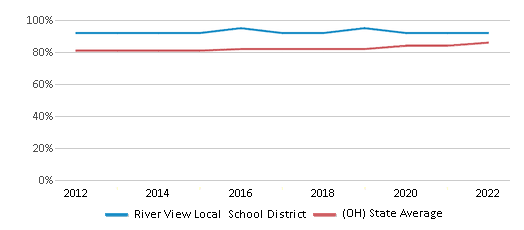
Students by Ethnicity:
Diversity Score
0.11
0.58
# American Indian Students
n/a
462 Students
% American Indian Students
n/a
n/a
# Asian Students
1 Student
8,061 Students
% Asian Students
n/a
3%
# Hispanic Students
25 Students
30,384 Students
% Hispanic Students
2%
9%
# Black Students
23 Students
67,190 Students
% Black Students
1%
20%
# White Students
1,509 Students
204,949 Students
% White Students
94%
61%
# Hawaiian Students
1 Student
329 Students
% Hawaiian Students
n/a
n/a
# Two or more races Students
42 Students
22,737 Students
% of Two or more races Students
3%
7%
Students by Grade:
# Students in PK Grade:
83
45,802
# Students in K Grade:
108
55,948
# Students in 1st Grade:
94
51,388
# Students in 2nd Grade:
126
49,073
# Students in 3rd Grade:
112
40,515
# Students in 4th Grade:
121
38,905
# Students in 5th Grade:
120
30,860
# Students in 6th Grade:
125
12,193
# Students in 7th Grade:
137
4,329
# Students in 8th Grade:
126
4,221
# Students in 9th Grade:
140
368
# Students in 10th Grade:
114
211
# Students in 11th Grade:
98
188
# Students in 12th Grade:
97
111
# Ungraded Students:
-
-
District Revenue and Spending
The revenue/student of $15,870 in this school district is less than the state median of $17,287. The school district revenue/student has grown by 9% over four school years.
The school district's spending/student of $14,403 is less than the state median of $17,235. The school district spending/student has grown by 9% over four school years.
Total Revenue
$25 MM
$28,879 MM
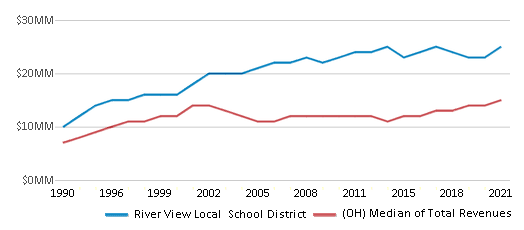
Spending
$23 MM
$28,792 MM
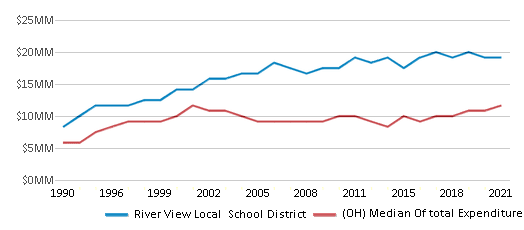
Revenue / Student
$15,870
$17,287
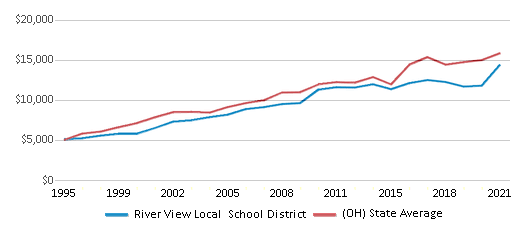
Spending / Student
$14,403
$17,235
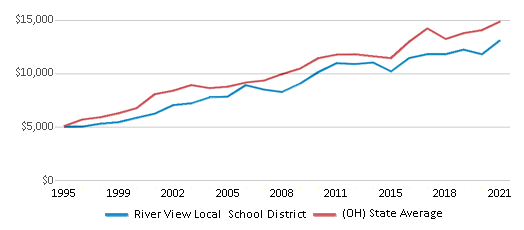
Best River View Local School District Public Preschools (2025)
School
(Math and Reading Proficiency)
(Math and Reading Proficiency)
Location
Grades
Students
Rank: #11.
River View Elementary School
(Math: 75% | Reading: 73%)
Rank:
Rank:
8/
Top 30%10
501 Blissfield Road
Warsaw, OH 43844
(740) 824-3727
Warsaw, OH 43844
(740) 824-3727
Grades: PK-2
| 411 students
Recent Articles

What Is A Charter School?
Explore the world of charter schools in this comprehensive guide. Learn about their history, how they operate, and the pros and cons of this educational innovation. Discover key facts about charter schools, including admission policies, demographics, and funding, as well as what to look for when considering a charter school for your child.

10 Reasons Why High School Sports Benefit Students
Discover the 10 compelling reasons why high school sports are beneficial for students. This comprehensive article explores how athletics enhance academic performance, foster personal growth, and develop crucial life skills. From improved fitness and time management to leadership development and community representation, learn why participating in high school sports can be a game-changer for students' overall success and well-being.

February 05, 2025
Understanding the U.S. Department of Education: Structure, Impact, and EvolutionWe explore how the Department of Education shapes American education, from its cabinet-level leadership to its impact on millions of students, written for general audiences seeking clarity on this vital institution.





